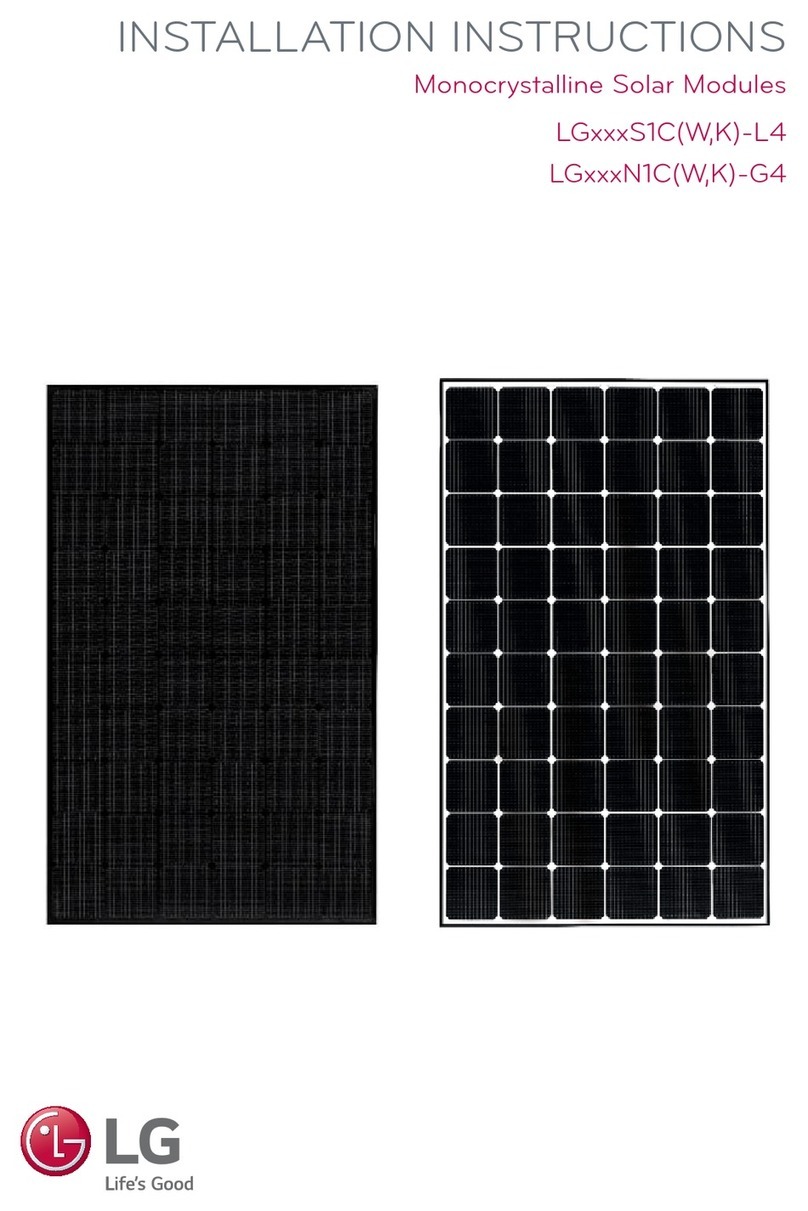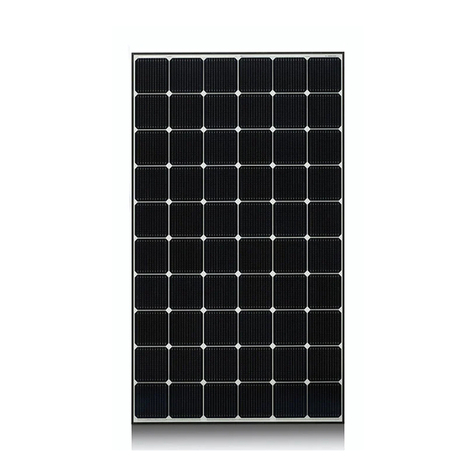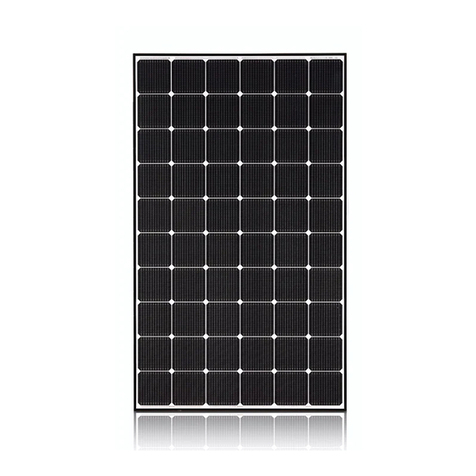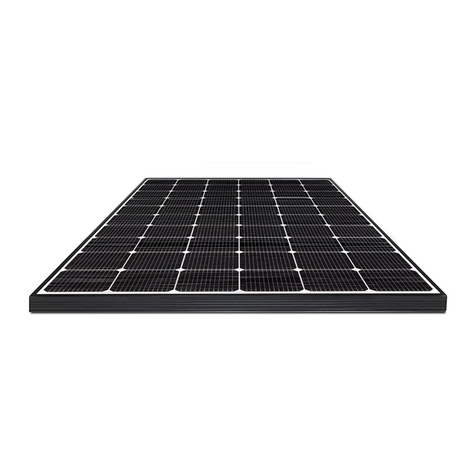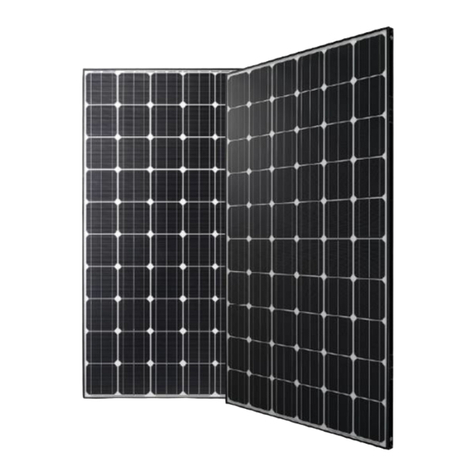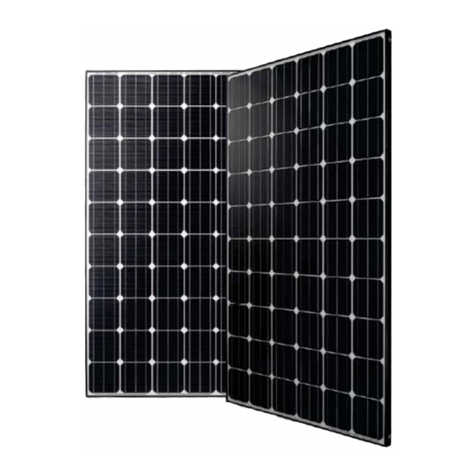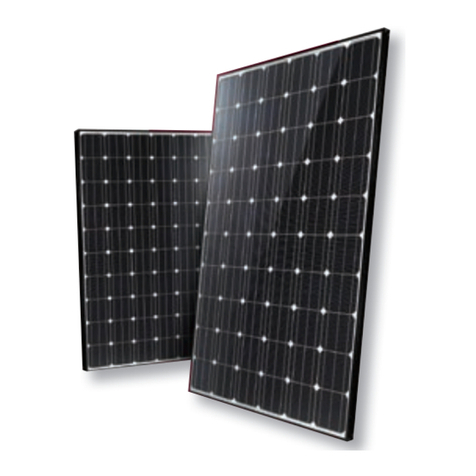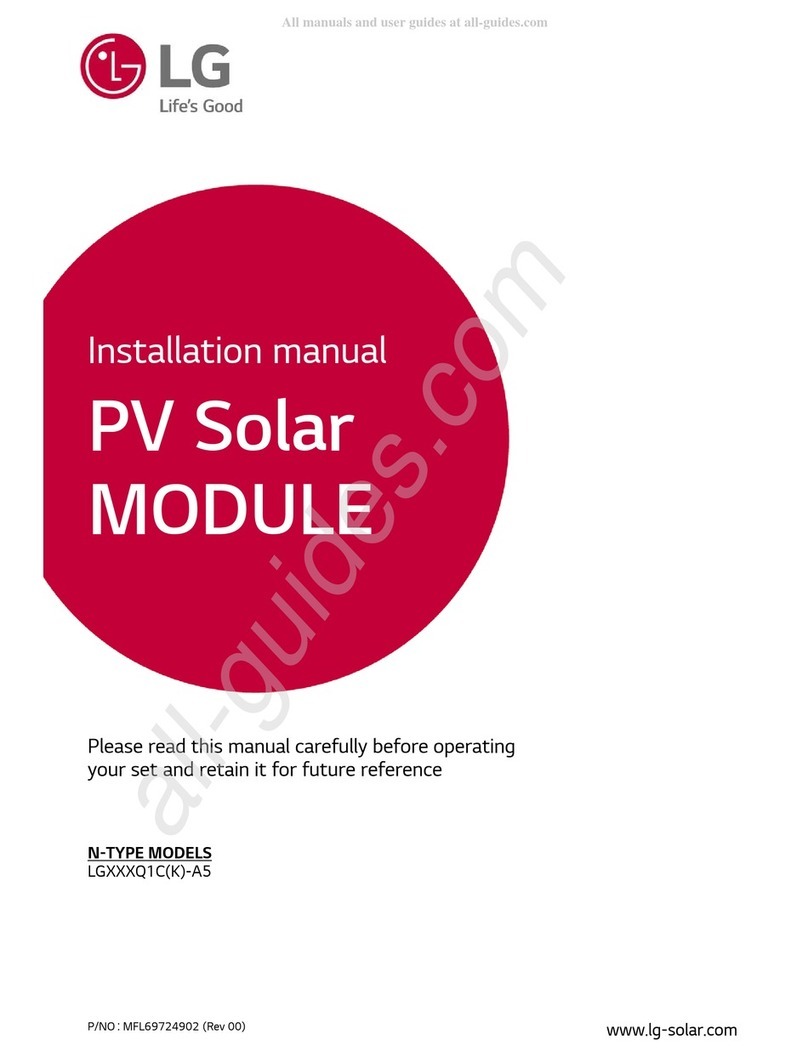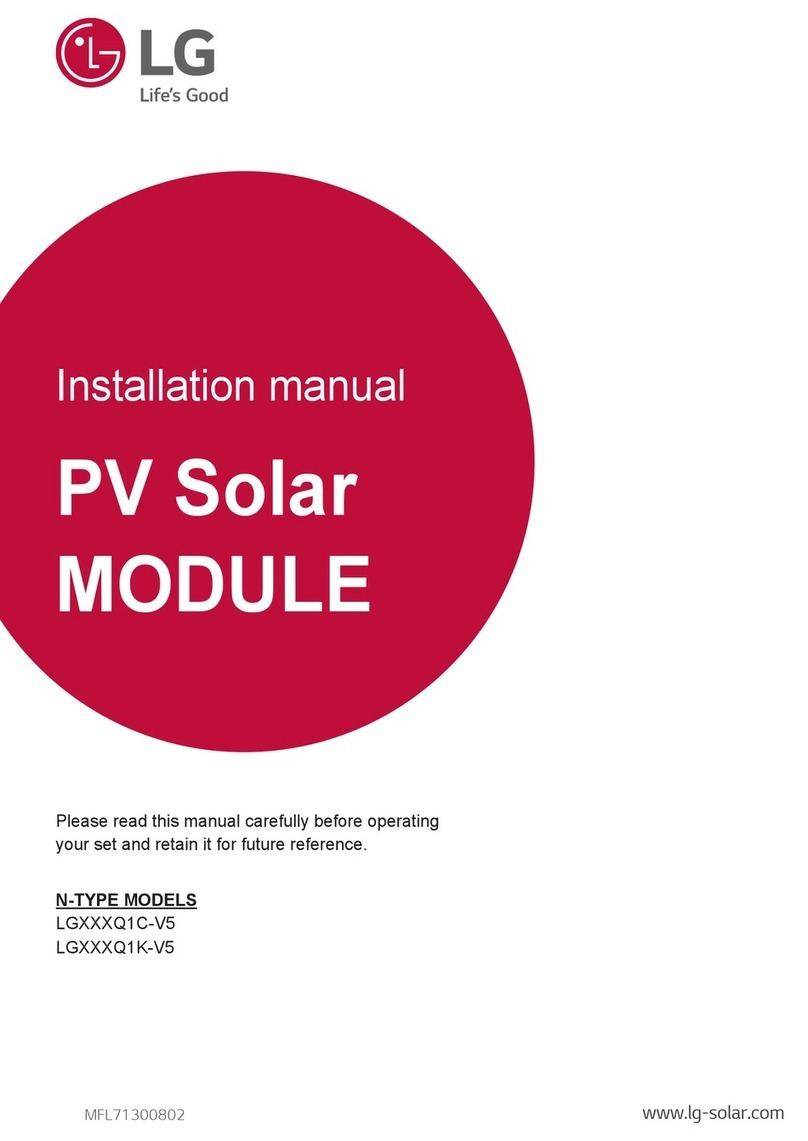07
Parallel Connection
•The solar modules may be combined in parallel to
produce the desired current output.
•When modules are combined in parallel, the total
current is equal to the sum of currents from each
module.
•The voltage of each module connected in parallel
should be the same.
•When connecting plural strings of modules in parallel
every series string or solar module must be fused prior
to combining with other strings.
•Abide with all applicable federal, state, and local codes
for additional fusing requirements and limitations on
the maximum number of solar modules in parallel.
•Maximum series fuse rating is refer to “Product
Specications; page 9~10”.
•Parallel conguration is not limited if proper measures
are taken to block the reverse current ow, e.g. fuses
for the protection of the module and cables from over-
current for prevention of unbalanced string voltage.
•A multiplying factor is required for increased output
of the PV modules. Under normal conditions, a PV
module is likely to experience conditions that produce
more current and/or voltage than reported at standard
test conditions. The requirements of the National
Electrical Code (NEC) in Article 690 shall be followed
to address these increased outputs. In installations
not under the requirements of the NEC, the values
of Isc and Voc marked on this PV module should
be multiplied by a factor of 125% when determining
component voltage ratings, conductor ampacities,
fuse sizes, and size of controls to the PV output.
•Depending on national directives, additional safety
factors might be applicable for over current protection.
General Wiring
•LG Electronics recommends that all wiring be double
insulated with a minimum rating of 90°C (194°F).
•All wiring should use a exible copper (Cu) conductor.
•The minimum size should be determined by the
applicable codes.
•LG Electronics recommends a size no smaller than
12AWG.
Earth Grounding
•All work must be conducted in conformance with all
Federal, State, and local codes and standards.
•Grounding works should be performed by an
authorized installer for the safety and maintenance of
the system in accordance with all national, state and
local electrical codes and regulations and standards.
•Specic information on the solar module dimensions
and location of grounding holes is provided in “Product
Specications”.
•One M4 stainless steel bolt, one nut, one spring
washer, two at washers, one cup washer, one star
washer and 12 AWG Cu wires are recommended per
mounting hole.
•Where common grounding hardware (nut, bolts,
washers) is used to attach a listed grounding device,
the attachment must be made in conformance with the
grounding device manufacturer’s instructions.
•All hardware should be consist of corrosion resistant
material such as stainless steel.
•There is an earth hole on the edge of the module
frame. Using this hole, an earth conductor and the
solar module frame may be recommended to be
connected and earthed as the below drawing.
•All screws and nuts shall be tightened to a torque of
4~5 Nm.
•A module with exposed conductive parts is
considered to be in compliance with UL 1703 only
when is electrically grounded in accordance with the
instructions presented below and the requirements of
the National Electrical Code.
The installation instructions shall include:
1. Details for wiring shall comply the NEC Article 690.
2. Details for the grounding method of the frame of
arrays shall comply with the NEC Article 250.
3. CNL model instruction manuals shall also include
a statement that installation shall be in accordance
with CSA C22.1, Safety Standard for Electrical
Installations, Canadian Electrical Code, Part 1.
Module
frame
Bolt
Flat washer
Star washer
Cup
washer
Flat washer
Spring
washer
Nut
Grounding
wire


